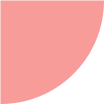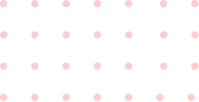What is a Product Designer's Role in App Development?
By
Last Updated May 05, 2023
Table of Content :
1. Introduction
2. What Exactly Is Product Design?
-Product Priority
-What Is the Definition of Product Design Strategy?
-Other Aspects of Design: UX vs. UI Design
-Designing the User Experience
-Design of User Interfaces
3. Product Designer vs. UX Designer
4. A Product Designer's Role
- Conduct research
- Product Development
- Phase of Development
- Delivery
5. Phase following release
6. Product Design's Future
7.Conclusion
A Product Designer's role in app development has evolved over time, and the scope of their work has expanded dramatically. In this rapidly changing digital world, with more advanced projects on the horizon, the need for and engagement with a product is increasing all the time.
Extending the engagement of UX Designers in all spheres concerning the product is a mandate for holistic, UX driven development. That is precisely where the need for a Product Designer arises.
According to a Bureau of Labor Statistics report, Michigan, California, and New York have the highest employment for Product Designers and have seen new opportunities and prospects.
There are User Experience Designers, User Interface Designers, Interaction Designers, and Graphic Designers, each with their own set of roles and responsibilities.
A Product Designer's role is growing in popularity because they handle the entire product design process. They not only drive the project, but they also have an impact on all design-related product decisions, big or small.
Product designers decide how a digital product should look and feel. They capture what customers truly want in order to create widely successful products.
A Product Designer's role in app development is critical. Their sole responsibility is not to create appealing designs or to supervise aesthetics, but to oversee the entire design process and its success.
This article delves into the role of a product designer in app development and explains how they create meaningful products.
What Exactly Is Product Design?
Product design is a comprehensive approach to creating products that combines target audience needs and business objectives. The Product Designer's role in app development is both user-centric and business-oriented.
Product Design sits at the crossroads of several design principles, including UI Design, User Research, Information Architecture, Design Thinking, and Visual Design. It is about determining how a new product fits into market demands and user preferences.
The role and responsibility of the Product Designer are to be a generalist. They discover new market opportunities for a product. The need for analytic and research skills is increasing.
Life Cycle of a Product Design
Product Priority
Designers used to take user and business requirements from Product Managers. As the scope of work and role of the Product Designer in app development has evolved over time, they now collaborate closely with Product Managers, Engineers, and cross-functional teams throughout the app development lifecycle.
Product designers are accountable not only for the design of the product but also for its overall success. They integrate functionality and experience to provide value to the end user.
What Is the Definition of Product Design Strategy?
Product design isn't just about making a user-friendly interface or an appealing app. A Product Design Strategy approaches app development holistically, combining Design Thinking with an agile mindset.
It places the user in a command. It prioritizes the user's needs and interests in order to create a product that not only users enjoy but also achieves business objectives.
Product Design Strategy is about striking a balance between user needs and business goals and not losing sight of either during the app development lifecycle.
Strategy in Product Design
Other Aspects of Design: UX vs. UI Design
Product Design encompasses disciplines such as UX Design, UI Design, and Product Management. UI and UX design are essential components of the app development process.
Designing the User Experience
User Experience Design entails developing products and providing services that provide users with a meaningful and enjoyable experience. User Experience Design is a multi-step process.
After a thorough UX review, the goal of UX design is to study user behavior, understand user interests and motivations, and provide engaging digital experiences. UX Design is the process of creating experiences that are intuitive, visually stimulating, and seamlessly guide users to the desired action.
The user experience (UX) of a mobile app is critical to its success. It entails defining a digital product's what, why, and how.
Design of User Interfaces
UI Design is the process of creating interfaces with an emphasis on responsiveness, aesthetics, and usability in order to provide a positive user experience.
By combining Visual Design (the look and feel) and Interaction Design, UI brings together purpose and aesthetics ( how a product works). The emphasis is on colors and typography.
User Interface Design improves the quality of user interactions and provides customers with a visually appealing product. UI Designers research and create a visual language that the user understands. The emphasis is always on improving usability and creating a stunning visual journey.
UX and UI are both important aspects of design. UX makes an app usable, whereas UI makes it visually appealing. While UI/UX Designers take different approaches to problems, a lot of emphases is placed on how to create an emotional connection between the user and the app.
Product Designer vs. UX Designer
Product Designers are experts in a variety of design disciplines. They always consider both business objectives and user needs. They are in charge of a product's functionality as well as its user experience.
Product designers must have a comprehensive understanding of product design, including visual and experience design, as well as business acumen. To bring great ideas to life, they collaborate closely with Product Managers and lead developers throughout the discovery, design, and development processes.
UI/UX Designers, on the other hand, focus on the target audience, study their behavior, and create designs that meet user needs. They are solely responsible for the design phase and providing a delightful experience to customers.
A Product Designer's Role The Role of a Product Designer Throughout the App Development Process
A Product Designer is responsible for a variety of tasks in an app development company. They are in charge of the design of digital products. They capture the product vision and ensure that their end designs will meet client and user expectations during the pre-discovery phase.
A Product Designer's Role
Discovery Phase
Most projects begin with a Discovery Phase. A Product Design Sprint is an excellent way to quickly create a functionally designed prototype and validate assumptions with real users.
Product Designers conduct extensive user research during the discovery phase. This process entails analyzing user and business requirements and developing requirement-based solutions to design problems.
1. Conduct research
The use of qualitative and quantitative research methods such as user interviews, usability testing, and data and analytics assists in making informed decisions about how to provide value to customers.
A Product Designer conducts User Interviews to help identify and analyze user needs and set goals. This is followed by the creation of user personas and journey mapping.
-
User Profile
Creating User Personas is an excellent way to learn about user habits, behavior patterns, and pain points. Personas include all of the necessary details about the user, making it simple to communicate insights about the target audience to multidisciplinary teams.
User Personas are extremely useful for strategizing, driving smart design decisions, and narrowing down a design solution.
-
Moodboards\sMoodboards
Mood boarding is an effective tool.
Design mood captures the product's mood and style and assists the Product Designer in characterizing interface elements.
Creating a mood board assists in determining the right color palette, fonts, style, and visual vibe for the product.
-
Mapping the User Journey
A Product Designer defines the entire user experience by mapping the user flow. They establish the user flow in an app through journey mapping, from the time a user discovers an app until the end task is completed. It outlines any design flaws or loopholes that require immediate attention and maps out the entire journey.
2. Product Development
During the product planning phase, a Product Designer provides user behavior insights and collaborates closely with key stakeholders and product developers.
-
Wireframing
Wireframes outlines the layout of a product and play an important role in early product structuring.
Product designers prioritize usability and efficiency while displaying how to interface elements will appear. By creating wireframes in Invision and Adobe XD, you can quickly generate feedback and make relevant changes based on the client's specific needs.
Making wireframes puts usability in the spotlight. It fleshes out the skeleton and clarifies functionality and navigation for cross-functional teams. Creating wireframes is an efficient and quick way to generate feedback and iterate accordingly.
Phase of Development
Product Designers are focused on the Visual Design of the product during this phase. Extensive user research and analysis, development of personas and journey maps, mood boarding, and wireframing.
-
Prototyping
A clickable high-fidelity prototype is a visual representation of the final design. It not only replicates key functionality but also defines the product's look and feel. Product Designers gain insights into user interaction through rapid prototyping.
Rapid prototyping is an excellent way to identify flaws and address usability issues before launching a product.
A Product Designer is involved in the entire app development process. Even after designing, they participate in development, delivery, and post-support.
-
Heuristic Analysis
Heuristic Evaluation is used to determine whether or not a product is user-friendly. This critical step aids in determining the usability of a product.
Usability experts evaluate a product against a set of predetermined criteria. Control and freedom for the user, error prevention, aesthetic and minimalist design
Product Designers use heuristic evaluation to identify design flaws and address them in an iterative process.
Delivery
Product Designers ensure that the requirements and specifications are clear, understood, and properly implemented during the final stage.
-
Testing for Usability
Before going to market, the product is tested with real-world users for factors such as usability and accessibility. A Product Designer's approach is user-centric from the start. They study how a user interacts with a product and what entices them to act. User feedback and reactions are duly incorporated to create an even better, scalable product.
Phase following release
A Product Designer's job does not end once the product is released to the public. Sometimes the user experience is overly complicated.
A Product Designer's other responsibilities include incorporating simple designs or reworking the app's UX after it has been released.
This is also the workflow and set of deliverables that a Product Designer provides from discovery to post-launch.
Product Design's Future
Product designers' futures are difficult to predict because disruptive technologies are changing the landscape and new design trends are gaining traction. However, AI is expected to have a significant impact on product design in the coming years.
Product Designers will soon be able to use AI to create prototypes and accelerate the product design and conceptualization process.
Designers can now create a variety of realistic prototypes with the assistance of AI.
Conclusion
The possibilities for Product Design solutions in App Development are virtually limitless. What is critical is to form cross-functional teams and hold creative sessions that allow designers and developers to collaborate in order to change how we look at old products and bring revolutionary ideas to life.
Recent Posts
Get a Free Quote.
Lets Build Your App!
Connect




